Earlier this week, Peloton dropped the news that the new lower cost Tread would be available for sale in the US in February or March (depending on what state you live in), Canada in February, and the UK at the end of December. Along with that information came the news that the Tread would be available starting immediately in showrooms for hands-on demonstrations. Peloton member John Bernstein (#YukonJack), who is also creator of the Pelofun, Craft Cocktails and More! group, was able to make it out to his showroom and try out the new Tread. What follows is his initial review and first impressions of the new Tread. He highlights some of the differences between the new lower cost Tread and the original Tread+, including the difference in cushion that the belt of the Tread has vs the slats of the original Tread+. John originally posted this in the Official Peloton Facebook Group, but was kind enough to let us re-share it here. Everything below this is John’s words and thoughts!
I had the opportunity today to test out the new Tread product that Peloton will begin selling in February and March, depending on the market you’re in. I’ll start by establishing the nomenclature I’ll use for the rest of this review. I have owned the original Tread, since it first came out about two years ago. That product is now called the Tread+, and the new product that I tested today is called the Tread.
Reviewing the differences between the Tread (picture 1) and the Tread+ (picture 2) is somewhat simpler than the review I did a few months ago of the Bike and Bike+ because there are only a handful of differences that warrant a lot of focus. Namely, those are the deck/running surface, and the monitor and associated sound. There are some other miscellaneous details that I’ll cover as well.
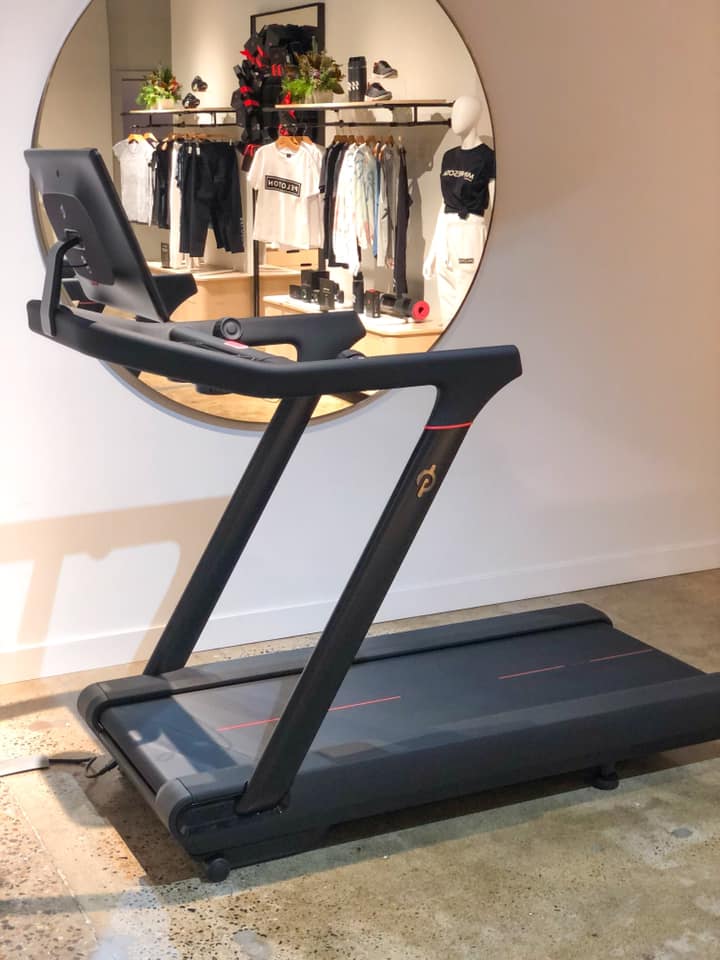
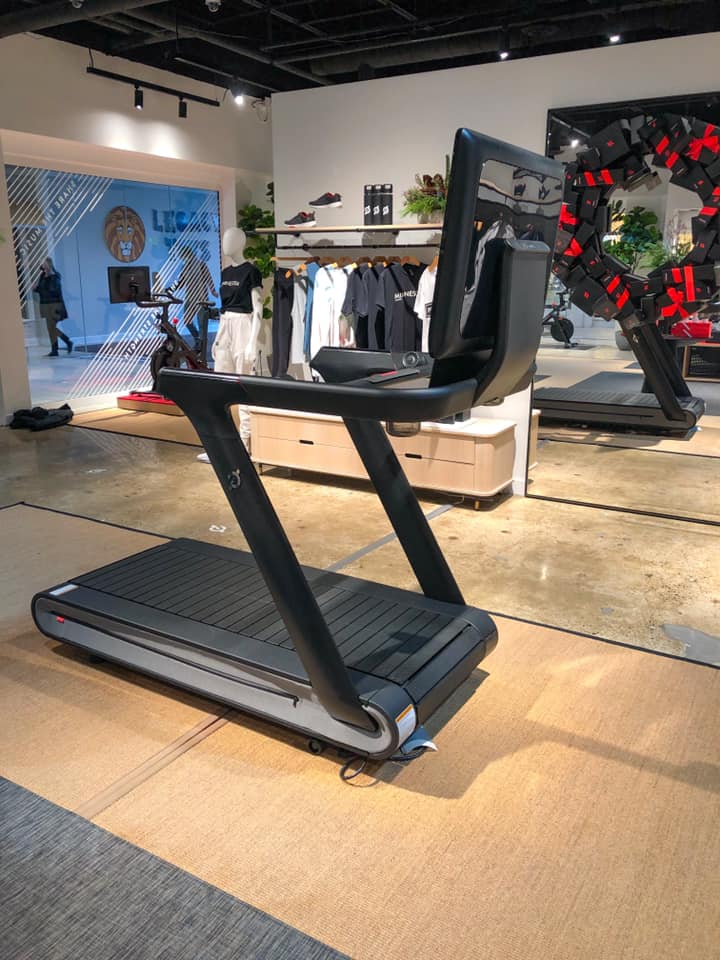
Running Surface
For me, the most important difference is the running surface. The Tread+ uses individual aluminum slats that are covered with thick rubber (picture 3). Those slats have flex, which creates a solid but forgiving running surface. The slats are driven by a ball bearing rail system, which means the force of a 150-200 pound person landing on the surface doesn’t even temporarily slow it.
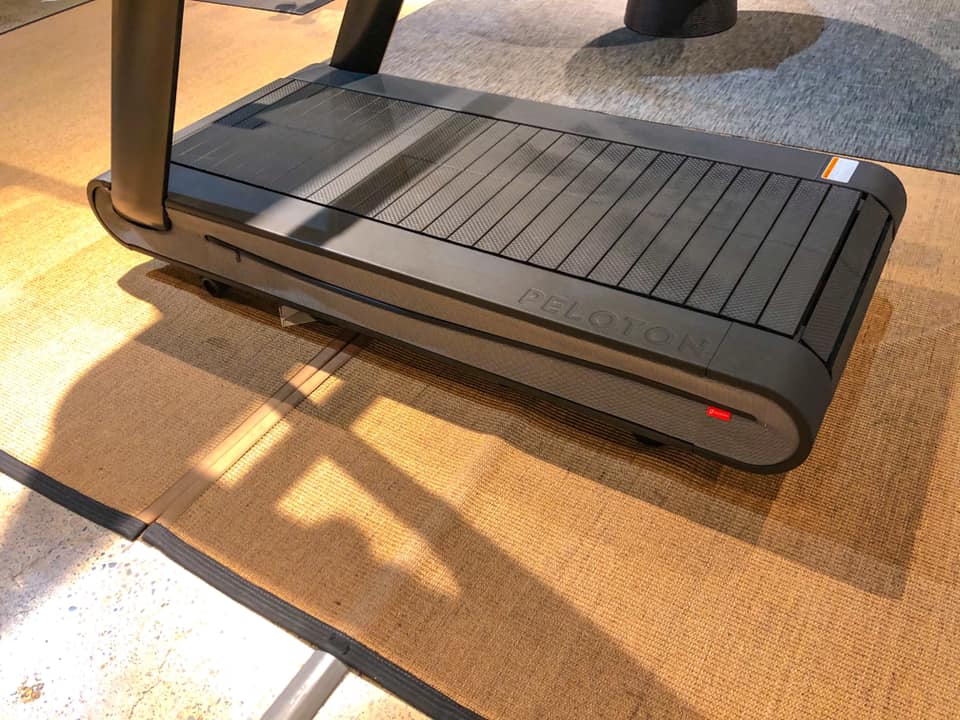
The Tread uses a more traditional treadmill deck with a belt that is driven by rollers across that deck (picture 4). It is a decent running surface, but definitely not as forgiving as the Tread+ deck. Like other treadmills of this design, the force of your foot striking the belt can briefly slow it. I would speculate that this is the reason why the Tread has a 3 HP DC motor, whereas the Tread+ has a 2 HP AC motor. Simply put, the design of the Tread+ doesn’t require a more powerful motor because the landing force is putting less strain on it.
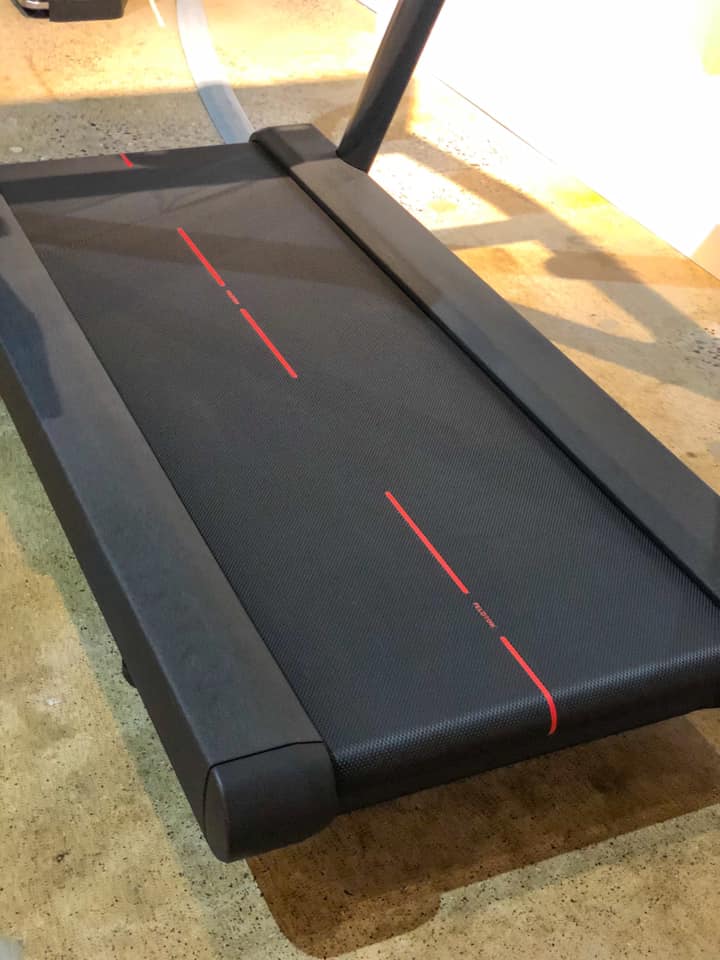
The slat belt on the Tread+ is a little bit noisier, but because of the thick rubber covering on each slat, you don’t hear your feet landing. In contrast, the belt on the Tread is a bit quieter, but you do hear your feet with each stride as they hit the deck. So, on balance the sound level is similar, but it comes from different sources on each treadmill. Lastly the running surface on the Tread+ is 67 inches long and on the Tread it’s 59 inches, both are 20 inches wide, and provide plenty of space for running. One other difference that relates to the running surface is that Free Mode (where you can disengage the running surface from the motor and move it with your feet) is only available on the Tread+.
Monitor
The Tread uses the same monitor as the Bike+, however it is not mounted in a way that allows it to swivel, as it does on the Bike+. It’s a 23.8 inch screen (picture 5) compared with a 32 inch screen on the Tread+ (picture 6). Both monitors give you the immersive experience for which Peloton is known, just a little bit more so with the larger monitor. The sound is very good from the Tread monitor, but it has less power and less bass range than the larger Tread+ monitor. Both monitors utilize the same processor, and have the same amount of memory and storage. The only other difference is that the Tread monitor has a higher resolution front-facing camera, and the same sliding privacy cover, for those of you worried that Putin is watching you exercise.😜😂😂
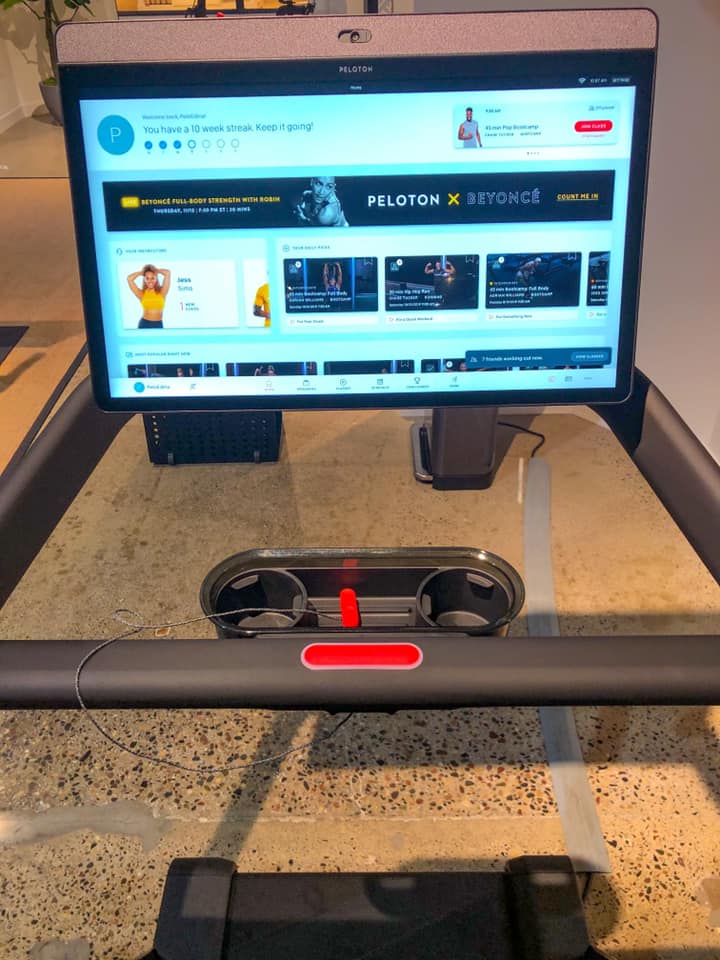
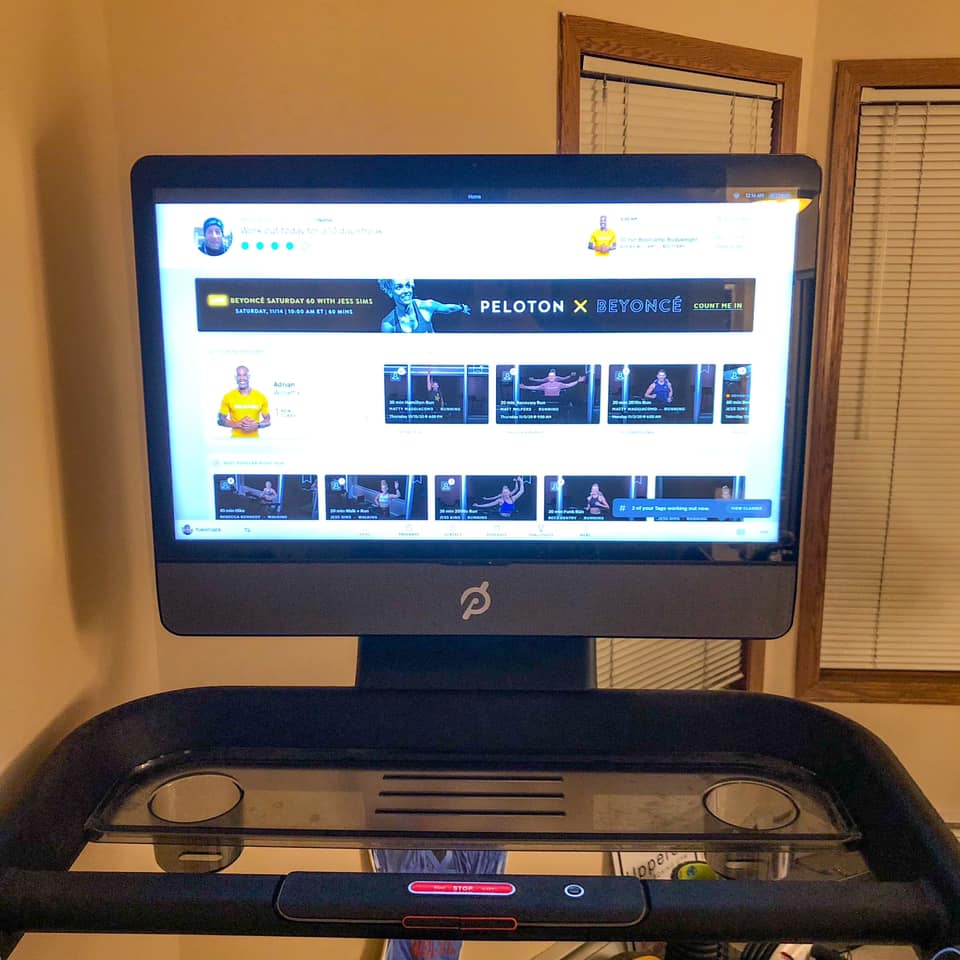
Size
The footprint of the Tread+ is 72.5 inches x 36.5 inches, and for the Tread it’s 68 inches x 33 inches. They really aren’t all that different. However, visually they look dramatically different. I think there are two primary reasons for this. First, the deck of the Tread+ is 11 inches high, noticeably higher than most treadmills. This is because the rubber-coated metal slats need more space to rotate around the base, whereas the belt is very flexible and can rotate around much smaller rollers. The Tread deck height is 8 inches, fairly typical of most treadmills. The second reason that the Tread+ looks so much bigger is the very large monitor, the top of which is 6 feet off the ground. By comparison, the top of the Tread monitor is 10 inches lower than that.
Other Details
The control system is identical, and is one of my favorite design features of the Peloton treadmill products. The wheel on the left side controls incline and the wheel on the right controls speed. Rolling the wheel, quickly adjusts speed by 0.1 mph and incline by 0.5%. There is a jump button in the center of each wheel that increases speed in 1 mph increments and incline in 1% increments. I did notice that the wheels on the Tread were slightly stiffer to move than the wheels on the Tread+. I wouldn’t say one was better or worse, just different. The lettering next to each wheel is embossed on the Tread+ and printed on the Tread (see picture 7 and 8 ). Both treadmills have a max speed of 12.5 mph, the max incline on the Tread is 12.5%, and on the Tread+ it’s 15%.

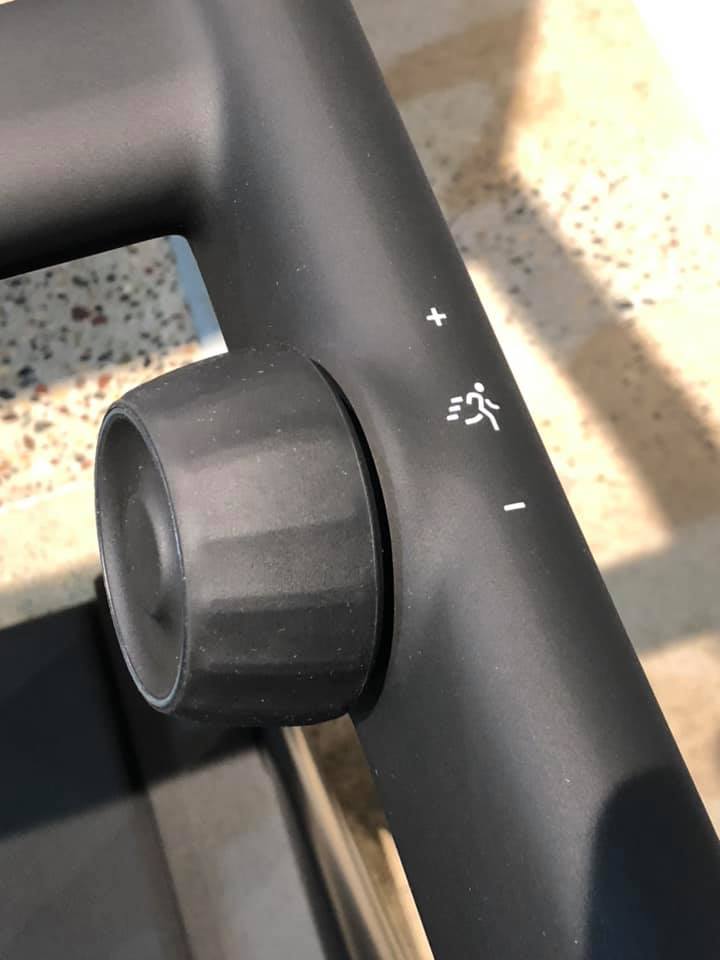
The handrails on the Tread+ are little beefier, and thus more stable than the Tread. Both treadmills have two drink holders, but the Tread+ has generous additional tray space for a towel or phone that the Tread does not have. I did notice that the handrails vibrated a bit more noticeably, while I was running on the Tread.
Conclusion
The Tread+ is undoubtedly a nicer treadmill than the Tread. It also costs $1800 more, it’s larger, and it’s 165 pounds heavier. If you are someone who would benefit from a more forgiving running surface and you can afford it, the Tread+ probably makes sense. It’s also great of you just want a higher end treadmill.
The Tread is a well-made, solid product at a mid-range price point, yet you get a high-quality monitor and the immersive Peloton experience. Plus, you also get those great control wheels, all of which, I think, makes it compelling when compared to similarly priced competitors. Clearly, Peloton’s goal was to expand the demographics of their target market. I suspect the new Tread will be highly successful at accomplishing that goal. #YukonJack

Support the site! Enjoy the news & guides we provide? Help us keep bringing you the news. Pelo Buddy is completely free, but you can help support the site with a one-time or monthly donation that will go to our writers, editors, and more. Find out more details here.
Get Our Newsletter Want to be sure to never miss any Peloton news? Sign up for our newsletter and get all the latest Peloton updates & Peloton rumors sent directly to your inbox.


Do you have a recommendation for a potential purchaser – Tread + vs Tread – if a purchaser is only going to walk on the Treadmill and not run? I’ve heard people say that the lower cost Tread is more reasonable if you will only walk. One of the users is heavy and I’m wondering if the weight issue of the user is a compelling reason to do one vs the other if you are only walking. Thank you.